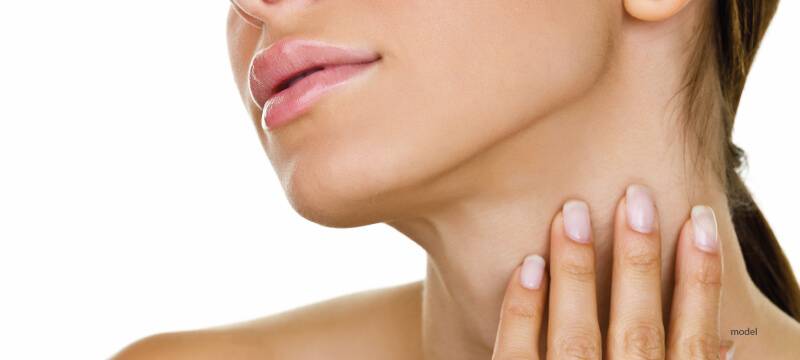Hidradenitis Suppurativa (Acne Inversa): Causes, Symptoms, Prevention, and Treatments

Hidradenitis Suppurativa, or Acne Inversa, is a chronic and debilitating skin disease. It presents as persistent, recurring bumps, pustules, nodules or abscesses that are often painful and may lead to scarring. Learn more about hidradenitis suppurativa including its symptoms, causes, and treatment options.
What is Hidradenitis Suppurativa (Acne Inversa)?
Acne Inversa, also known as hidradenitis suppurativa (HS) is an autoinflammatory skin condition. The exact cause is still a mystery, but the onset typically occurs after puberty. The condition is not transmitted from person to person.
Acne Inversa is a disease of the hair follicles. It primarily affects the sweat glands in skin folds such as the underarms, groin, genitals or perineum, underneath the breasts and buttocks, and the back of the neck or behind the ears. More than one area can be affected at a time.
People with acne inversa develop hair follicle inflammation which leads to painful bumps, pustules, nodules or abscesses. Similar to acne, HS often leads to scarring. Scars form as deep sinus tracts or tunnels that may also drain blood or pus.
How is Hidradenitis Suppurativa Diagnosed?
Only a dermatologist or doctor specializing in skin disorders can diagnose hidradenitis suppurativa.
To diagnose the condition, your doctor will ask you about the history of your skin problems and your family history. They will do a physical exam to look closely at the appearance of your skin. After noting where your lesions are located, they will ask you questions about how long they have persisted.
Your doctor may do a blood test, take a small skin biopsy, or take a sample of pus to eliminate the possibility of other skin conditions or infections.
Is There a Cure for Hidradenitis Suppurativa?
The chronic condition has no known cure, although symptoms and outbreaks can be managed with treatment. The best treatment for each patient is decided in part by the severity of their condition. The Hurley Staging System is used by dermatologists to assess which response is most appropriate.
Hurley Stages of Hidradenitis Suppurativa:
I – 1 or more abscess without scars or tunnels
II – Recurrent widespread abscesses with possible scarring and deep tunnels
III – Large body areas covered with abscesses and scars. Widespread tunnels beneath the skin connect multiple abscesses
Can Hidradenitis Suppurativa Be Prevented?
Because there is no known cause, there is no guaranteed method of preventing HS. There are however, some lifestyle changes that may help minimize risk, including the following:
- If you smoke, stop
- Maintain a healthy body weight
- Keep sweat glands clean and dry
- Avoid shaving commonly affected areas
- Wear clean, dry and loose-fitting clothing
Who Is Susceptible To Developing Hidradenitis Suppurativa?
Acne Inversa is estimated to affect up to 4% of the global population. The condition is 3 times more common in women than men. It tends to first appear after puberty and can flare during menstruation. Some women experience a reprieve while they are pregnant or after menopause.
You are more susceptible to HS if any of the following is true:
- You were born as a woman
- You are between 20-40 years old
- You have at least one relative with HS
- You’re Black, Hispanic or biracial
- You are overweight
- You smoke (up to 90% of people with HS are smokers)
Hidradenitis suppurativa often presents with one or more of the following comorbidities:
- Anxiety, depression or mood disorders
- Alcohol or substance use disorders
- Thyroid disorders
- Metabolic syndrome (excess body fat around the waist, high blood pressure, blood sugar, and cholesterol levels)
- Inflammatory Bowel Disease such as Crohn’s or Ulcerative Colitis
- Inflammatory Arthritis, specifically Spondyloarthritis
- PAPA, PASH or PAPASH Syndromes
- Polycystic Ovary Syndrome (PCOS)
- Other follicular occlusion syndromes
What Causes Acne Inversa?
The exact cause of HS is unknown. Researchers believe that genetics, hormones and the environment all play a role.
HS begins when the body releases protein signals (cytokines) that turn on an immune response. This leads to inflammation, which can rupture follicle walls. When sweat glands are damaged, acne-like abscesses can occur. Nearby follicles are also affected, leading to even more nodules or abscesses.
As skin heals, it leaves behind scars. Additional flare-ups in areas already affected by scar tissue can worsen skin thickening, potentially leading to a decrease in range of motion.
Left untreated, HS can worsen. Abscesses can link together to form deep tunnel-like sinus tracts in the skin. The condition can be extremely painful, and may lead to additional infection.
Researchers and doctors once thought HS was just a disease of the skin, but recent studies suggest it is a systemic inflammatory disorder associated with several comorbidities.
Can Acne Inversa Be Treated?
Unfortunately, there is no known cure for acne inversa. Symptoms can be treated and flare-ups managed to minimize scarring and the risk of infection. Depending on the severity of your condition, your doctor may treat your HS with one or more of the following methods:
Topical Treatments: These include lotions, creams and soaps to reduce inflammation and the impurities that can block follicles. Active ingredients may include benzoyl peroxide or antibiotics.
Oral Antibiotics: Clindamycin, rifampicin, and tetracycline are all used to decrease the bacteria that lead to clogged sweat glands, inflammation and infection.
Steroids: Steroidal treatments may be topical, oral, or injected directly into the inflamed site. These treatments help reduce pain and inflammation.
Hormones: Hormonal treatments are not yet fully understood, but Finasteride, Spironolactone and oral contraceptive pills may help minimize breakouts.
Biologics: Biologics are immunosuppressants made in part from biological sources. HS is the result of an overactive immune system, which produces too many inflammation-triggering proteins.
Drugs such as Adalimumab (Humira) stop these inflammatory cells from replicating. This helps decrease pain and swelling. Humira is the only drug which is FDA-approved for the treatment of HS. Other biologics can be used off-label if Humira is proven ineffective.
Minimizing Hidradenitis Suppurativa with Lifestyle Change
Lifestyle changes may help minimize the symptoms of HS, and can make treatment more effective. The following have been proven beneficial in managing acne inversa.
- Weight loss
- Smoking cessation
- Reduce friction with loose fitting clothing
- Apply cold compress to reduce pain and swelling
- Apply heat to help abscesses drain
- Keep open sores clean
- Apply petroleum jelly to keep sores moist and prevent scabbing and scarring
- Apply non-stick gauze to open lesions, and change daily
In addition, support groups can be helpful for addressing the chronic pain and embarrassment associated with HS.
If you believe you have HS, it’s best to see a doctor or board-certified dermatologist to get your condition diagnosed. There may be a treatment that can help minimize your symptoms.
